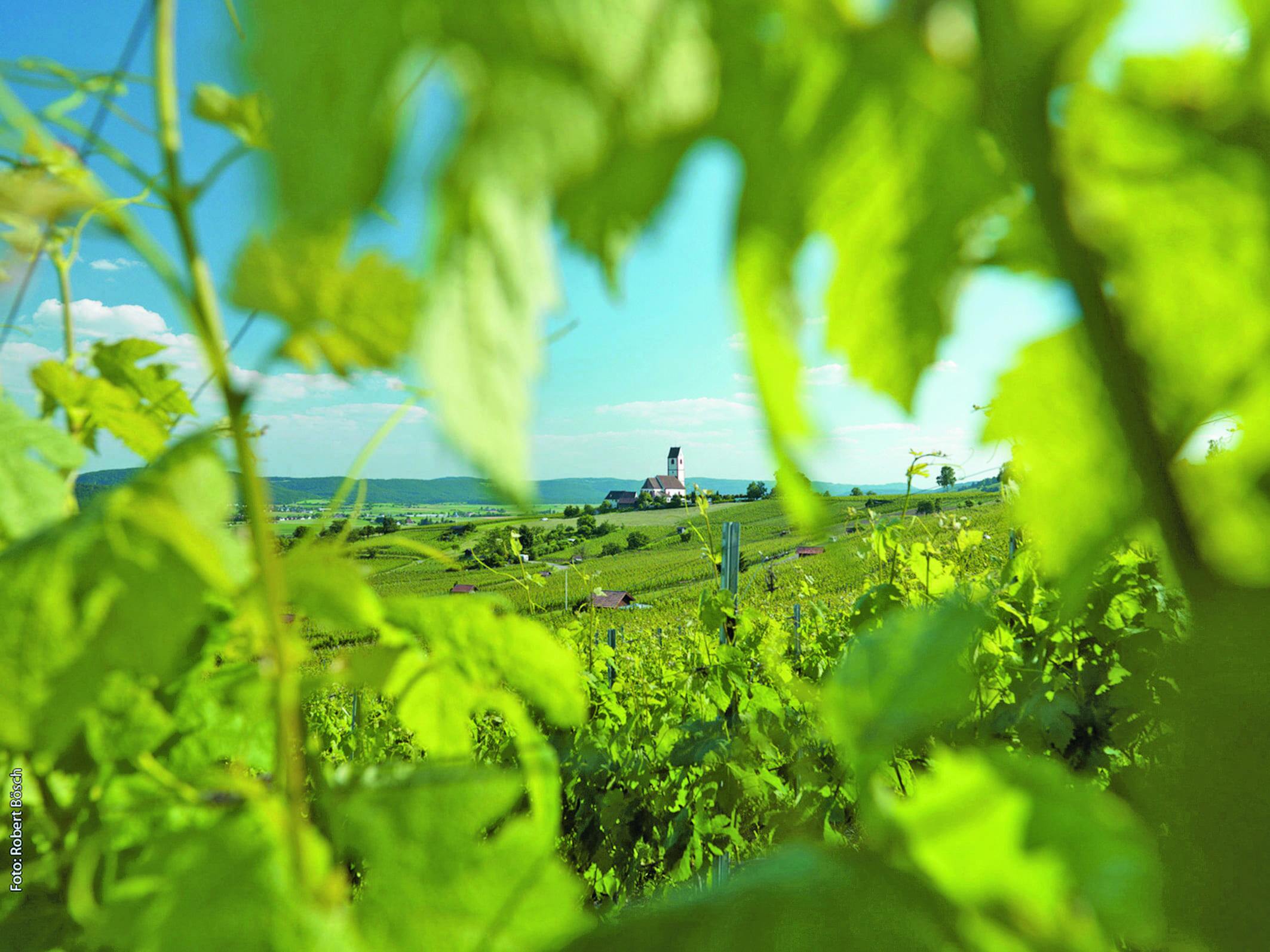
SCHAFFHAUSEN REGION
AUTONOMOUS REGION
People who live in Schaffhausen appreciate its compact size, its high standard of living, the beautiful places to live, the local recreational areas on their doorstep and the above-average range of cultural and sporting activities. As Switzerland’s most northerly canton, Schaffhausen is largely surrounded by Germany. 82% of the 185-kmlong border abuts the German federal state of BadenWürttemberg. 1740 border stones encircle the canton. The authorities therefore maintain open and constructive contact on various levels, not only with its neighbouring cantons, but also with its German neighbours. The canton is divided into three separate areas that are all located north of the Rhine. The main part stretches from the Rhine bend at Schaffhausen and Neuhausen am Rheinfall in the Klettgau region, to the Randen area and the Reiat plateau. In the east, the Steiner Zipfel lies at the efflux of Lower Lake Constance and in the south west is the lower part of the canton, with the villages of Buchberg and Rüdlingen. The landscape around Schaffhausen lies on the edge of the Swiss Central Plateau. The gentle hills and valleys are part of the foothills of the Jura and bear testimony to the glacier movements of the last Ice Age. The landscape is diverse and characterised particularly by the Rhine, with its unique river landscape, the large areas of forest, the sweeping agricultural land and the carefully tended vineyards. The canton has an area of 298 square kilometres and corresponds to 0.7% of the entire Swiss territory. More than 84,000 people live in the canton’s 26 municipalities; that equates to around 1% of the total Swiss residential population. Schaffhausen is thus one of the smallest cantons in Switzerland.
www.sh.ch: Homepage of the canton of Schaffhausen. Information from the administration, the government and the parliament.
- Bargen
- Beggingen
- Beringen
- Buch
- Buchberg
- Büttenhardt
- Dörflingen
- Gächlingen
- Hallau
- Hemishofen
- Lohn
- Löhningen
- Merishausen
- Neuhausen am Rheinfall
- Neunkirch
- Oberhallau
- Ramsen
- Rüdlingen
- Schaffhausen
- Schleitheim
- Siblingen
- Stein am Rhein
- Stetten
- Thayngen
- Trasadingen
- Wilchingen
HISTORY
The Schaffhausen region’s present settlement structure was laid out with colonization by the Alemannic tribes in the early Middle Ages. Alemannic remains from the 7th century are known from almost all the canton’s whole area. As early as Roman times the most important settlements were at Schleitheim and Stein am Rhein.
After the year 1000, economic life in the region, which had been predominantly agricultural up to then, undergoes great development. The link to the Rhine had become more important by the 11th century at the latest. The award of minting and market rights to Schaffhausen and Stein am Rhein and particularly the city of Schaffhausen’s rapid growth can be attributed to increasing commercial activity. The residents of Schaffhausen utilized the interruption to the major waterway caused by the Rhine Falls by providing trans-shipping and transport services in return for appropriate fees and Customs duties. A strong city state started to develop with acquisition of sovereign rights over the villages in the surrounding area. In the Middle Ages, Schaffhausen was often on the frontier between major powers. To maintain its independence, Schaffhausen joined the confederation in 1501 and assumed responsibility for safeguarding the confederation’s northern border, of which defences the Munot Fortress, largely constructed by serf labour and which today is the city’s emblem, formed part.
DEMOCRATIC UPHEAVAL
Up to the end of the 18th century, representatives of the municipal guilds ruled their rural subjects absolutely. With the French Revolution’s radical changes, the rural population fought for the same rights and freedoms as urban dwellers. The canton, the city of Schaffhausen and 35 independent municipalities were created in the 19th century.
Up to the start of the 19th century, the inhabitants of Schaffhausen primarily lived from agriculture, crafts and trade. This changed with the commitment of industrial pioneers, who laid the foundations for a radical restructuring of the economy. In the 19th and 20th century, Schaffhausen becomes an important industrial location with numerous renowned companies.
ECONOMIC BOOM
In the 1950s and 1960s, the region benefitted from the general economic growth. The old-established companies such as Georg Fischer, SIG, IVF and others boomed; they are joined by new companies. There is virtually no unemployment. On the contrary, labour is scarce and has to be obtained from abroad, primarily from Italy at that time.
The crisis in the 1990s resulted in a radical reduction in jobs in industry. Schaffhausen had to reinvent itself and give its economy a broader footing. The importance of the service centre increased with new firms moving in and existing businesses reorganizing. The Schaffhausen region is an attractive and innovative economic location which proves to be globally competitive for businesses operating internationally. After a substantial decline in the population in the 1990s, the population has been increasing again for some years. Many immigrants are again coming from abroad, many from Schaffhausen’s neighbouring state of Germany, but also from all over the world.